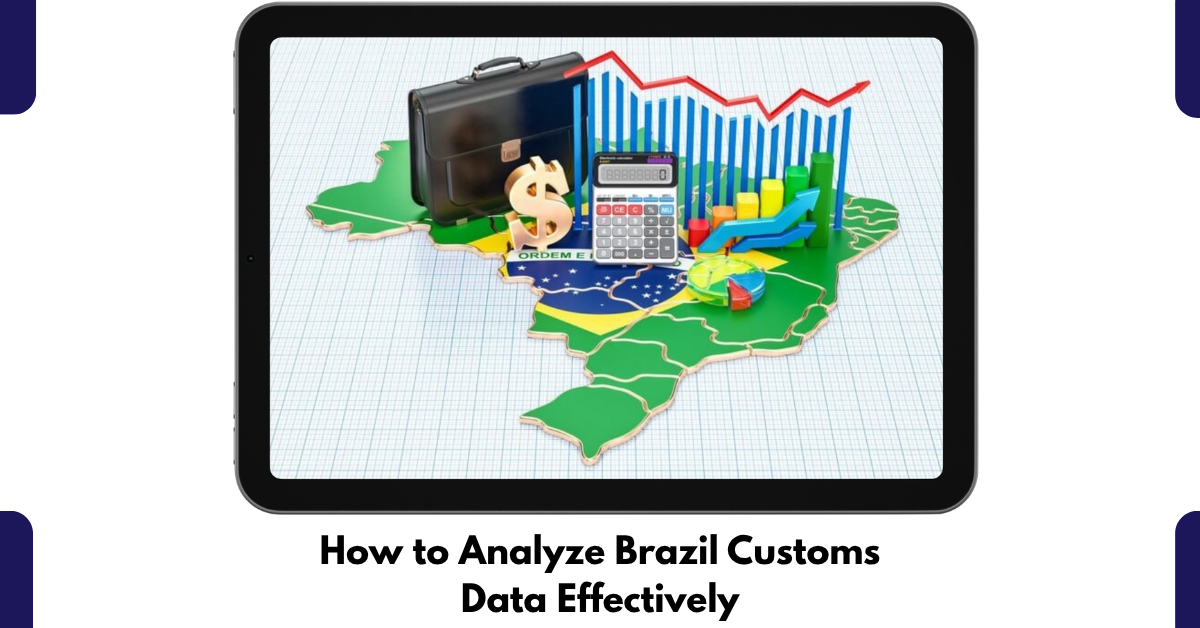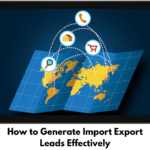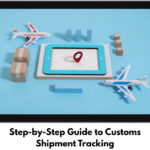Unlocking the Power of Trade Intelligence
In the current globalized environment, information is not simply a bonus; it’s a necessity for global business operations. Brazil’s trade ecosystem is one of the most vibrant around the world. The country’s exports and imports make a great impact on industries on different continents. Businesses wishing to succeed in Brazil’s competitive climate need to understand how to analyze Brazil customs data international and do it thoroughly.
Brazil customs data has substance; it has hidden information that must be untangled. Instead of mere figures, the data has consumer behavior, competitors, and economics all tied in. How well a business can interpret and analyze these numbers will be the determinant in either them adjusting and embracing new changes and or not adapting and losing the their chances.
Why Brazil Customs Data Holds Strategic Value
Apart from being the largest market in Latin America, Brazil is one of the leading producers in the world for commodities, agriculture, energy and manufactured goods. Businesses that trade globally use Brazil trade data to analyze possible business associates, study rivals, and discover new opportunities. The database’s relevance is not limited only to exporters and importers.
Market research scholars, investment economy specialists, suppliers of transport services, and state regulators all rely on Brazil import data and Brazil export data to form tactics that not only eliminate possible risks, but enhance productivity and efficiency.Only looking at data offers no value. If data is not supported by context, it is just meaningless figures. This is where analysis of country-specific Brazilian custom data helps. These companies enjoy an unmatched position when it comes to decision-making as they align their business models in accordance to real world trade scenarios.
Understanding the Core Sources of Brazil Customs Data
As a matter of fact, trade transparency is a matter of national priority for the Brazilian government, and they offer several avenues for public access. The Comex Stat Brazil website is one portal for comprehensive trade statistics. It offers and organizes data on exports and imports according to products, origins, destinations, and time.
In addition to this, foreign companies and scholars use data on Brazilian customs from India and other bilateral trade routes to study particular trade routes. Be it the tracking of soybeans to Asian export geography, machinery imports from Europe, or other budding tech partnerships, these data sets give a detailed picture of Brazil’s trade engagements around the world. Brazil customs data
Brazil exports by country also provides a layer of information that helps identify the geographical regions where Brazilian products are most sought after. By analyzing such data sets, companies are better able to identify trends, regional dependencies, and changes in the global supply chain that they are anticipating.
The Growing Complexity of Global Trade
The world market has changed in comparison to a decade back. Now, factors such as pandemics, trade wars, and difficulties in the supply chain along with changes in tariffs make the market more volatile. They make it hard to function without a dependable source of information. Companies previously able to employ their intuition now stand to lose a lot due to missing opportunities, lose money, or pay fines. The necessity remains: the analysis of Brazil customs data remains important and without it, companies will lag behind.
Each shipment, container, and transaction contributes to the economy. All together, they create a comprehensive image. Brazil has currency data that can be used to x trade data and that data can help companies with risk and opportunity analysis. It is not only a political exercise, but it is also a pivotal tactic. Brazil customs data
Practical Techniques for Effective Analysis
Determining Brazil customs data by country becomes easier with the right structure that intertwines industry knowledge and rational analysis. Here are some techniques that have proven useful.
1. Define Clear Objectives
Determine what you intend to do with the data. Are you analyzing the supply chain to determine risk? Prospective buyers? Competitors? Forming actionable verbiage out of raw import data lies in the objectives you set. Brazil customs data
2. Segment by Country and Commodity
Disaggregation and segmentation are distinct concepts. For instance, if a spreadsheet contains country export data a company can determine potential target markets for specific products. On the other hand, analysis of data by HS codes provides exact market flows for particular products, thus eliminating guess and enhancing precision. Brazil customs data
3. Monitor Seasonal and Long-Term Trends
Exports from Brazil, for example, soybeans harvested during specific months of the year and iron ore shipped all year around, are easily predictable, demonstrating seasonality. On the other hand, analyzing the long term trend of business Brazil export data allows companies to estimate changes and therefore business supply strategies.
4. Benchmark Against Global Competitors
Indian Brazil customs data, or other datasets for bilateral use, helps companies verify business Brazil exports data. In comparison with other partners, what competitive advantages are present and what pricing, supply or demand vulnerabilities are there.
5. Integrate Data Visualization Tools
The addition of intuitive and automated graphing and mapping tools significantly enhances the power of data. Tableau, Power BI, and various Python libraries for example, allow professionals to interpret and visualize Brazil export data. This promotes the discovery of underlying patterns.
The Competitive Advantages of Mastering Data Analysis
Competitively analyzing Brazil customs data international does more than just manage risk; it develops a competitive edge. Businesses utilizing Comex Stat Brazil alongside other official data sets are able to:
– Discover New Markets: By analyzing Brazil exports to the rest of the world, businesses are able to target new territories before their rivals. Brazil customs data
– Improve Bargaining Position: Access to authenticated Brazil trade data allows businesses to extract more value from their clientele to trade their goods.
– Optimize Resource Use: Comprehending demand cycles from import data on overstocked and underutilized resources saves businesses money.
– Improve Regulatory Compliance: Customs records are public, therefore businesses can manage their global strategies to mitigate their risk of international fines. Brazil customs data
One of the best examples comes from an agribusiness company which analyzed Brazil’s export data and predicted growing demand for soybeans in Asia. By assessing volumes of soybeans during preemptive shipments and final destination ports, the company increased their share in the distribution market.
Turning Insights into Real-World Results
Utilization of the Brazil customs data by country is more than a theoretical concept. It is the basis of real world business change. The work is in the shift from knowledge to application. Firms which periodically analyze Brazil customs data international should:
– Bolt the findings to the corporate strategy.
– Construct responsive, flexible supply chains able to withstand and adapt to market changes.
– Use tools such as Comex Stat Brazil to create automated systems focused on monitoring.
– Partner with trade advisors, analytics, or consulting firms to gain a different perspective.
In international business, the thin slice that separates between thriving and surviving often revolves around the ability to make a decisive move based on the right data. The difference between the two is that the former will not simply wait for changes in the market, trends, or the position of the industry; they are the ones who will create them.
Conclusion: Building a Future-Ready Trade Strategy
The customs data of Brazil, the trade data between India and Brazil, as well as the Brazil exports categorized by country, extrapolate data which is a key part of any business that intends to work internationally. In this context, the data outlines the risks and possible trends and provides the company with the necessary information to make a rational decision based on the description brought forth by the analysis. Brazil customs data
Braza trade analytics and other trade tools such as Comex Stat Brazil give a business a relative edge in a market that is based on precision, cast and to the point materials and strategies. In these times of constant change and uncertainty, the company that changes its focus toward data driven business intelligence will be the front leaders.
FAQs on Brazil Customs Data
Q1. What is included in Brazil customs data?
It includes HS codes, product details, shipment values, importer/exporter names, and port information.
Q2. Why is Brazil customs data important?
It helps businesses identify trade opportunities, analyze competitors, and explore the Brazilian market effectively.
Q3. Which are the major imports of Brazil?
Brazil mainly imports machinery, electronics, chemicals, pharmaceuticals, and fuels.
Q4. Which are the major exports of Brazil?
Soybeans, iron ore, crude oil, beef, and coffee are Brazil’s top exports.
Q5. Where can I access Brazil customs data?
From global trade databases, Brazilian customs portals, or private data providers offering verified trade intelligence.



